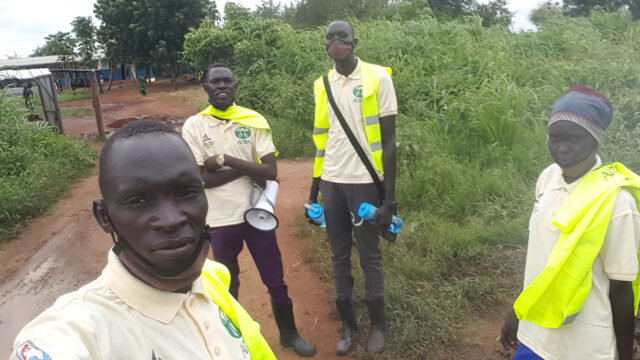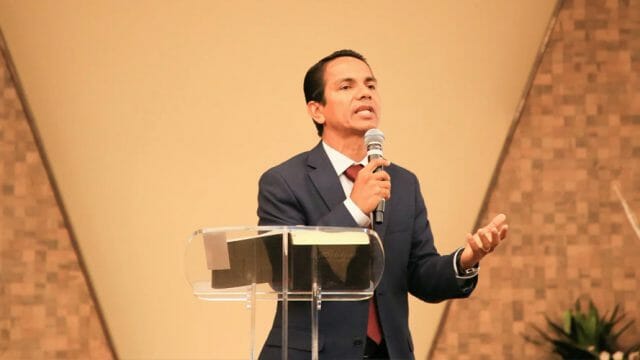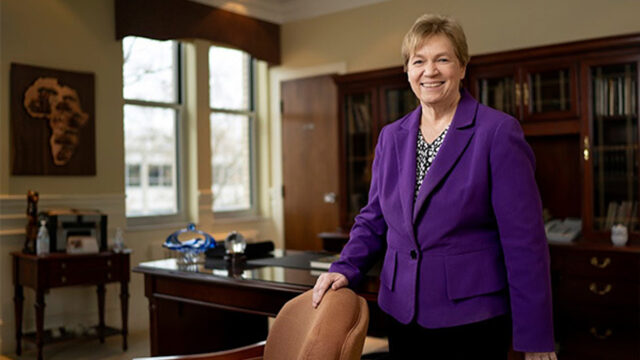A story of faith highlights the importance of Maranatha to keep building God’s church.
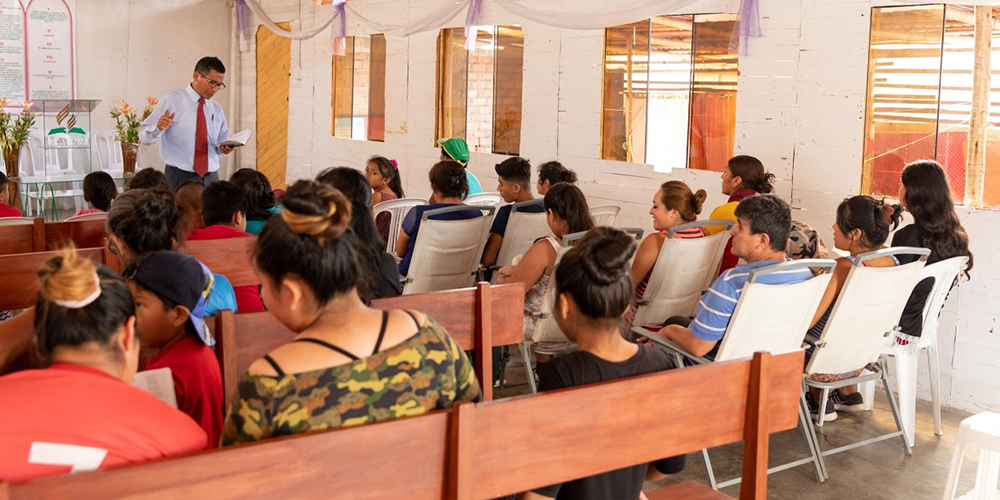
On a Saturday (Sabbath) afternoon, the Primavera Seventhday Adventist congregation in Peru was finishing up the first service in their new church, with the word “church” being loosely defined.
It was a big day for Primavera — 10 years in the making. Until then, the group had been hopping from home to home for worship. The members knew that in order to be truly effective, they needed roots. They needed a real church building.
The problem was that land was expensive. Although the area was mostly agricultural, it was a nice region relatively close to the city of Lima. Finally, through much saving and a donation from a group in Canada, the congregation purchased a corner lot.
With no funds left, the members built a church with mud brick walls. They used a sheet of plastic for the roof. A neighbor gave them cardboard and plywood to build a fence. It wasn’t attractive, but it was a shelter, and it would do for now.
“I remember on that [first] Saturday, the pastor arrived in the afternoon. He came through the door and said, ‘Brothers! I have something to tell you!’” said Hernan Alejos, a member of the Primavera church. “‘You are blessed by God.’ Those were the pastor’s words.”
The pastor announced that Maranatha Volunteers International had responded to a request from the Adventist Church in Peru to build churches and schools. Primavera had been selected for one of the sites.
“At that moment, the members, about fifty to sixty of us, began to weep for joy,” Alejos recalled. “It was really a dream to have a temple to preach the message, and the Lord awarded us.”
Time to Build
Months later, in February 2005, volunteers with the Columbus Eastwood Seventh-day Adventist Church in Ohio, United States, arrived to build a sanctuary in Primavera. Alejos said he remembers watching them, astounded, as they spent all day mixing mortar, laying block, and pushing wheelbarrows.
“Young people, wow! There were people coming from other countries. We had never seen this here,” Alejos said. “We were astounded seeing there are some humble hearts around. Sometimes appearances are deceiving, because we thought, ‘No way they are going to lay a brick!’ But they set an example of what love for God means.”
During the project, the volunteers completed the church and a surrounding wall. They gave the congregation new chairs. They also organized a medical clinic at the park across the street.
An Outgrown Church Building
In 2020, the Primavera church building still looks new, since the members are meticulous about upkeep. The interior has shiny tile floors and a suspended ceiling. Outside, there is a shaded patio where mothers can sit with their young children while listening to the sermon. On the back of the property, there is a two-story building with Sabbath School classrooms, bathrooms, and a kitchen.
But the building isn’t the only thing that has expanded. The medical clinic that the volunteers organized resulted in a number of baptisms. Membership grew and eventually split to start new groups, then grew some more.
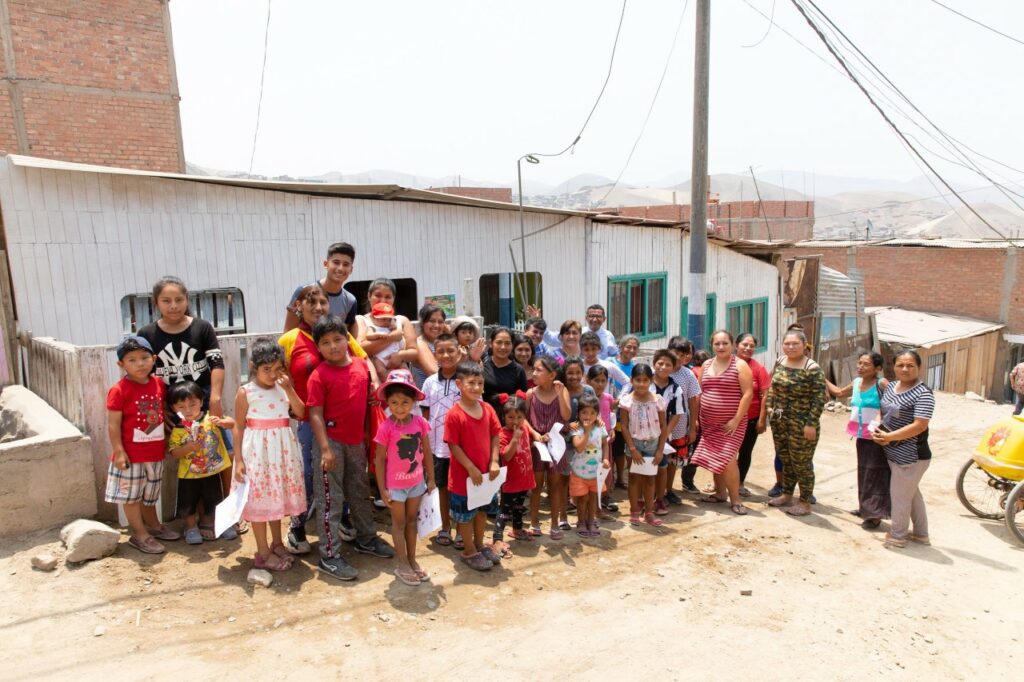
In the meantime, the neighborhood developed. What used to be agricultural land is now a nice suburb. Alejos said the neighbors are quite involved with church outreach activities. Their church is a central meeting hub for Adventists in the district. They also have the strongest tithe returns in the area.
Today, Primavera church has 120 members. Several of them still remember when Maranatha arrived.
“To this day, many of those children, who are now young adults, remember what the volunteers did here,” Alejos said. “We’re grateful to Maranatha for what they did for us, for the church, for the brothers, for the community. Thanks to Maranatha, the gospel has been preached in this place.”
A Long History in Peru
The story of Primavera is not unique. In fact, dozens of similar journeys have unfolded after Maranatha’s effort in the country, from 2004 to 2006. During that time, more than 3,000 volunteers came through Peru to construct churches and schools. One of the more high-profile projects was a floating church on Lake Titicaca. Peru was a beloved location for Maranatha volunteers, and the affection was returned by the Adventist Church in Peru.
“[The effort] made an imprint on the history of the church in Peru. We have good memories. Thanks to Maranatha, we have many churches and schools — beautiful and well-finished churches, and places where the brethren can praise and glorify God’s name,” said David Echevarria, treasurer of the Adventist Church in southern Peru.
The influx of church and school buildings ignited great growth for the church in Peru. Eventually, leaders realized that they needed help once more.
“Membership in Peru has grown, and our biggest challenge and worry is having a church where they can gather. It’s not easy. We have many places — we have some land, but our brethren have no money. They lack the necessary funds. Willingly, they try to build a small church — very makeshift,” Echevarria said.
A Church in Need
One such church is the Mi Peru C Seventh-day Adventist Church. The building is nestled in the mountains rising from the desert that surrounds Lima. There are no paved roads here — just a seemingly endless, dusty grid of homes and small businesses.
This congregation started as a daughter group of the Mi Peru A Seventh-day Adventist Church. They started by meeting in a house that they eventually purchased, but it left no money for renovations. Unfortunately, the space badly needs fixing up. The floors are cement and dirt. The walls and roof are made from scraps of corrugated metal and wood, with gaps and holes in many places.
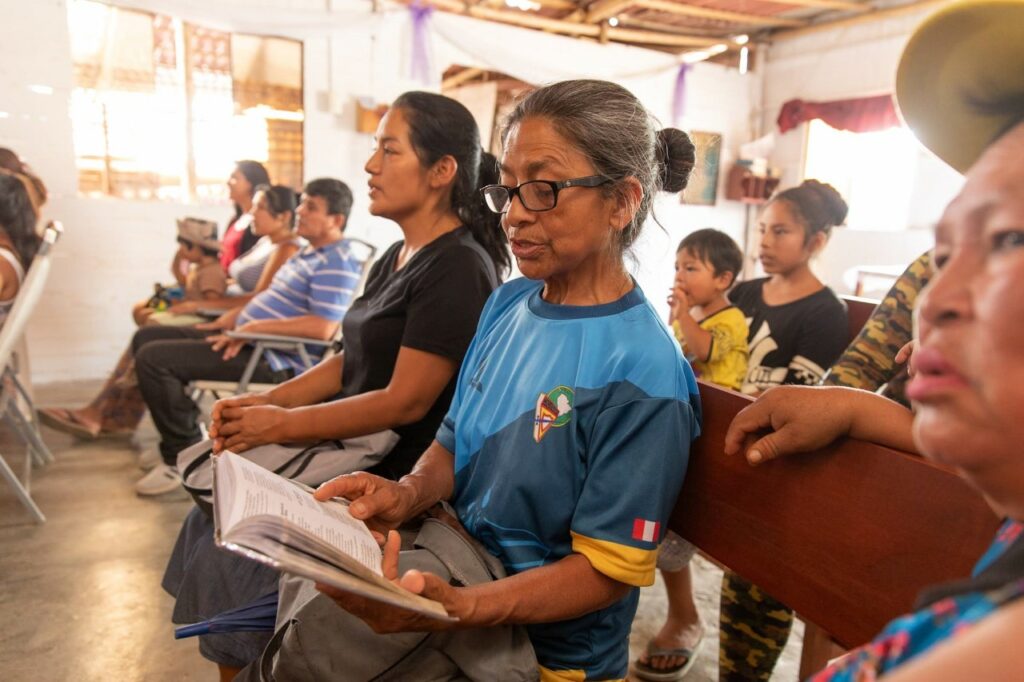
“There are lots of cats, and when they walk [on the roof], they move it. It sometimes breaks, and when it is winter, it leaks … it gets wet and damages the few things we’ve got,” said Miriam Silva, a long-time member of the church. “The construction is makeshift, so we have been robbed about three or four times already. They have stolen what little we have.”
Despite the hardship, this is a congregation that has endured much and persevered. When Mi Peru C first started nearly 20 years ago, evangelism meetings and outreach increased membership to almost 100 people. Then, for various reasons, attendance started to dwindle. Soon it was down to two people.
“Some brothers, who had left disappointed, tried to also discourage me. ‘Why are you there? Nobody’s left. Close that church and go back to Mi Peru A,’” said Flor Ospina, one of the two members that were left. “But sister Sara told me, ‘How are we going to leave? If God has opened a church here, it has to remain open, not closed.’”
The Power of Prayer
Sara Luz was the other remaining member. And while Ospina had doubts, Luz was unwavering in her faith that God would grow the church once more. “I said, ‘No. God gave us this church because He has a plan. We can’t leave.’ So we started praying.”
Luz and Ospina began meeting at the church to pray, kneeling on the cold concrete to plead with God for help. Sometimes Luz would wake early and go by herself.
One night, she was alone at the church after a long day of work. “I turned off the light, and I prayed … and I fell asleep praying. I had a dream of Jesus. He was between heaven and earth, and He was looking at me. He told me, ‘You’re not alone. You’re with me,’” Luz said.
Suddenly, the ground started trembling, shaking Luz out of her sleep. It was an earthquake, and immediately she was frightened. Then she heard the voice once more: “You’re not alone. I’m here.”
Luz left the church feeling emboldened. That Saturday (Sabbath), Luz and Ospina met once more to pray. The following week, people started coming to church. Week by week, attendance increased. Today, they have a healthy congregation of mostly women who run the church, handling every detail, including maintenance. They are active in their neighborhood, offering Bible studies, children’s ministries, and community outreach.
“Why Do You Not Have a Church?”
Yet as self-sufficient as they seem, the Mi Peru C congregation needs help with one thing: a real worship space.
Said Ospina, “We are always being criticized by people. They say, ‘How come, after so many years, you do not have a church?’”
Why do you not have a church? It’s a question that many congregations in Peru receive, given that many meet in haphazard spaces.
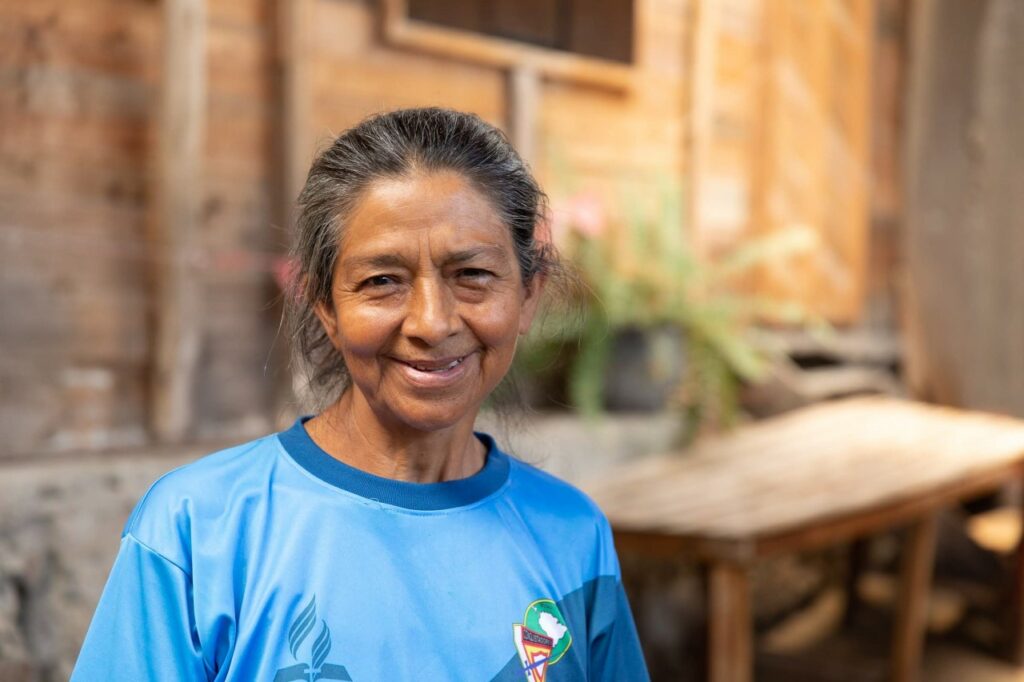
“If our own house is well built, why don’t we do the same with the church?” Luz asked. “I mean, this doesn’t look like a church now. It looks like a shelter. We haven’t been able to build a proper church, as we had planned. And I think God deserves better than this.”
This very sentiment is at the core of Maranatha’s mission. The goal is to provide congregations with strong, dignified places of worship where people, community, and faith can thrive.
“We’d like to have churches everywhere, and our dream was that in every place, we’d have a special temple — to have the best house because it is the house of God,” Echevarria said. “And with the experience from 2006, we dreamed that Maranatha could return to Peru for the second time.”
Maranatha Returns
Church leaders in Peru reached out to Maranatha a few years ago, asking for help with churches and schools. After several meetings, Maranatha kicked off the first project for the new effort in Peru in December 2019, with several more lined up for 2020.
“We will challenge our members to continue preaching, sharing, and baptizing,” Echevarria said. “Now we will establish the temple with Maranatha, and the cycle will be complete.”
In spring 2020, several groups were scheduled to build churches and a new school. But when the COVID-19 pandemic broke in March, travel suddenly ceased and most projects were postponed. It was heartbreaking for the volunteers and the communities who were expecting a long-awaited answer to prayer. But already, volunteer teams are making plans to reschedule their mission trips, including those for Peru. After the initial setback, they are determined to reach the mission field and serve. Much like the women of Mi Peru C, even when the world is calling for surrender, the mission cannot be stopped when trust is placed in God.
Silva, who is the daughter of Luz, wasn’t a member of Mi Peru C when they were at their lowest point. But she remembers hearing the stories from Ospina and Luz, and it left an indelible impression on her faith. It’s a lesson for the times we are living in now.
“Only God can give you that strength, because when you’re on your own, the usual thing is to give up,” Silva said. “But when you have faith in God — when you are convinced He is the owner of everything, who do you go to? To Him.”
The original version of this story appeared in Maranatha Volunteers International’s The Volunteer magazine.


